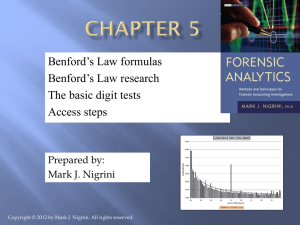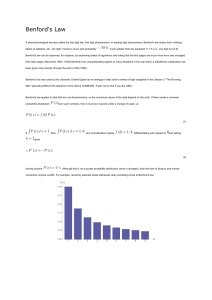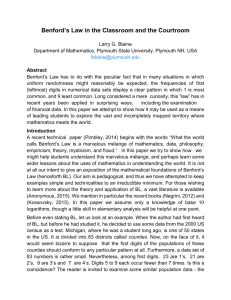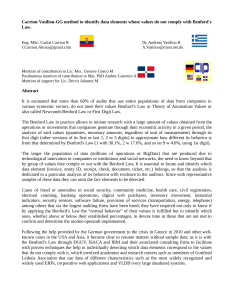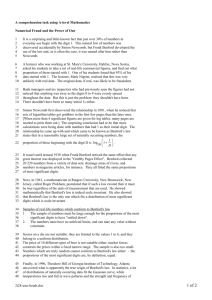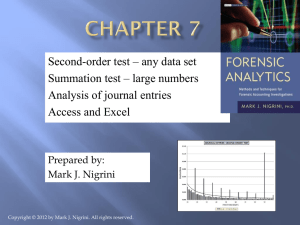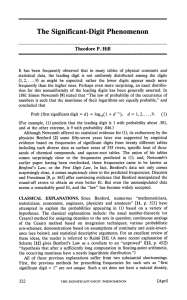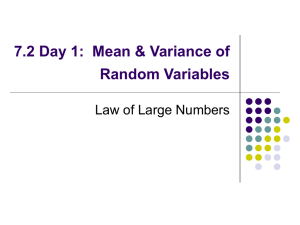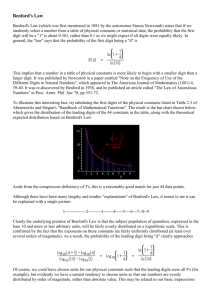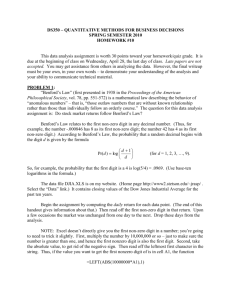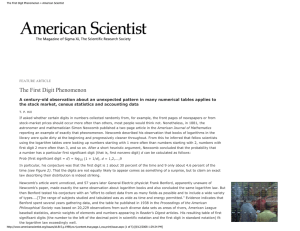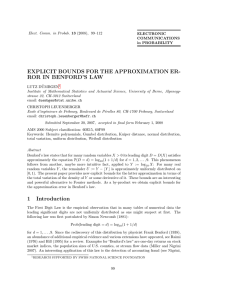Benford*s lAw of anamolous numbers
advertisement
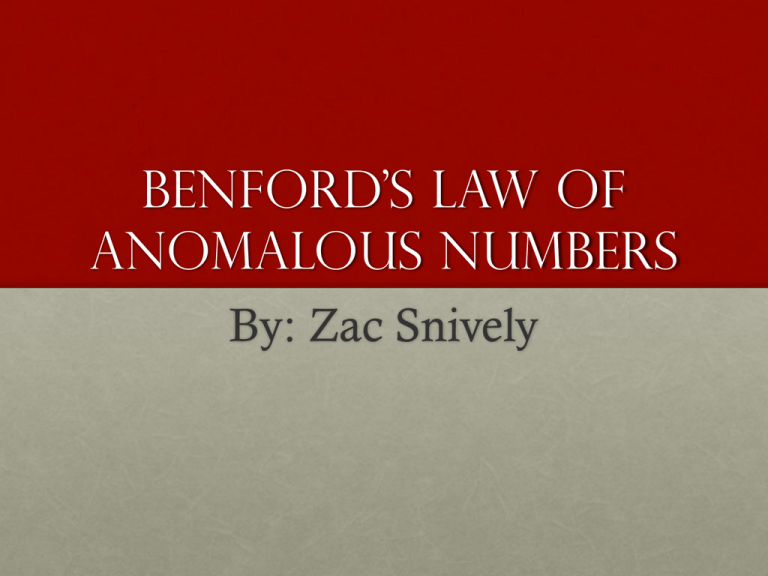
Benford’s law of anomalous numbers By: Zac Snively Which of these data sets are true What is Benford’s law? • It is a phenomenological law that states the first digit, or leading digit of numbers will roughly follow the distribution of: Digit Percent Digit Percent 1 30.1% 6 6.7% 2 17.6% 7 5.8% 3 12.5% 8 5.1% 4 9.7% 9 4.6% 5 7.9% How it was founded • In 1881 an American astronomer Simon Newcomb noticed that the early pages of log tables seemed to always be grubby, while the later pages seemed to be cleaner. • He sketched out a law stating that, the probability of the leading digit to be: • Instead of proving this he simply stated that his rule was evident, and nothing further was said on the topic for 57 years until it was brought up again by Frank Benford How it was Founded • In 1938, Frank Benford, a physicist for General Electric brought together over 20,000 numbers from different sources, such as readers digest articles, street addresses, atomic weights, population sizes and many more. • He found that all of these numbers followed the pattern that Newcomb had come up with. Benford then gave the law its name but also provided no true explanation of it. Data Pool that Benford used for his findings When it will work • Benford’s Law will work on any data set that the distributions spans over large magnitudes of numbers. • Examples of when it wont work 1. 2. Human height in meters. Pitch speeds of a Major League Baseball game Uses • Because numbers generally follow this distribution it can be used for things such as: 1.Fraud Detection • Fraudulent Campaign Election Finance • Fraudulent Toxic Gas Emissions • Tax Fraud How does Benford’s law help with fraud detection • As you can see numbers that are generated by a Random Number Generator (RNG) don’t follow Benford’s Law so if an auditor sees a set of numerical entries that don’t follow Benford’s Law a flag will be raised and thus that set of taxes will be looked into further. Other Information • Looking at the graph you will see the data values for numbers that appeared in US tax returns. An interesting fact about this is that if you wanted to convert all of the US dollars into Rupees all 14, 414 numbers would be changed, but it would still follow Benford’s Law. A system that remains unchanged after it is multiplied by a constant is called a scale invariant. Explanation of the Law • While there is no true explanation of the reason why Benford’s Law works there are a few ideas. There are a few that can be easily explained. • Another one is the Raffle Ticket example.
